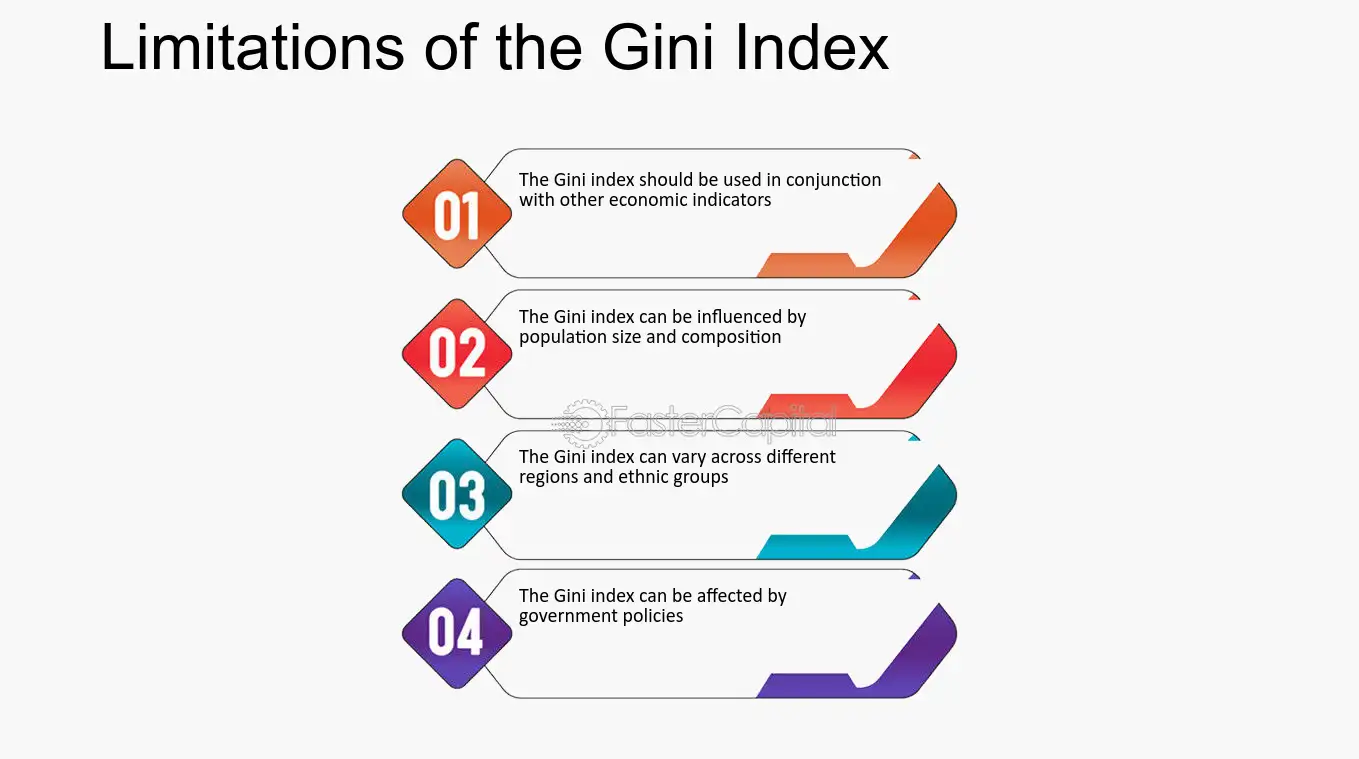Gini Index Formula: A Complete Guide for Decision Trees and Machine Learning
Table of Contents

One of the favorite algorithms in machine learning due to their ease of interpretation and usage is decision trees. A key component in developing a robust decision tree is choosing the appropriate splitting criteria at every node. This is where the Gini index formula comes into play. The Gini measure is used to assess the purity or impurity of a dataset split, so the decision tree is both accurate and efficient. Without a good metric such as the Gini index formula decision tree, models may overfit or misfit data. With knowledge of the Gini index formula, we can construct trees that maximize performance while minimizing complexity, resulting in more effective predictions.
What is the Gini Index?
The formula for Gini index is a mathematical representation of inequality or impurity in the classification problems. In a decision tree, it informs us how pure or mixed the data is upon splitting into various classes. Take a basket of fruits as an example: if there are only apples, then the node is pure; if there are apples, bananas, and oranges, it is impure. Gini index formula quantifies this impurity so that it can be compared across various splits. With application, the decision tree based on the Gini index formula maximizes nodes to split so that purity is higher for improved classification results.
Why is the Gini Index Important in Decision Trees?
The Gini index formula is significant as it determines how decision trees split data at every step. By reducing impurity, it makes the resulting child nodes as uniform as possible. This renders the tree more precise and interpretable. The decision tree based on the Gini index formula also avoids redundant complexity, making the model simple and efficient. In comparison to entropy, which involves logarithms, the Gini index formula is computationally less intensive yet provides similar outcomes. Its combination of simplicity and efficiency makes it a favorite metric in classification problems. Finally, following the formula for the Gini index results in cleaner splits and more trustworthy machine learning models.

*TheHindu
Gini Index Formula Explained
The Gini index formula is used to measure impurity in a dataset and is central to classification tasks. Mathematically, it is expressed as:
Gini=1−∑i=1npi2Gini = 1 – \sum_{i=1}^{n} p_i^2Gini=1−i=1∑npi2
Here, pip_ipi represents the probability of a class in a given node, and nnn is the number of classes. The formula for Gini index subtracts the squared probabilities of all classes from 1, ensuring the result is between 0 and 1. A value of 0 indicates pure classification, while values closer to 1 show higher impurity. The Gini index formula decision tree applies this calculation repeatedly at each split to identify the attribute that best separates data. By breaking down probabilities step by step, the Gini index formula ensures cleaner partitions.
Step-by-Step Calculation of the Gini Index
Let’s calculate the Gini index formula using a small dataset of 10 samples: 6 belong to Class A and 4 to Class B.
Step 1: Compute probabilities. Class A probability = 6/10 = 0.6. Class B probability = 4/10 = 0.4.
Step 2: Apply the formula for Gini index:
Gini=1−(0.62+0.42)=1−(0.36+0.16)=1−0.52=0.48Gini = 1 – (0.6^2 + 0.4^2) = 1 – (0.36 + 0.16) = 1 – 0.52 = 0.48Gini=1−(0.62+0.42)=1−(0.36+0.16)=1−0.52=0.48
Step 3: Interpret the result. A Gini index formula decision tree would interpret 0.48 as a moderately impure node. Lower Gini values indicate better splits.
Step 4: Recalculate for splits on other features. The Gini index formula is then applied to each attribute, and the split with the lowest impurity is chosen. This ensures the tree branches toward higher classification accuracy.
Example: Gini Index in Action
Consider a dataset of students where the target variable is “Pass” or “Fail.” Attributes include “Study Hours” and “Attendance.” Using the Gini index formula, we first calculate impurity for the root node. If we split based on “Study Hours,” probabilities might yield a formula for Gini index value of 0.32. Splitting on “Attendance” may produce a value of 0.45.
Since 0.32 is lower, the Gini index formula decision tree selects “Study Hours” as the better attribute for the first split.
We continue calculating the Gini index formula for subsequent branches until nodes become pure or meet stopping conditions. At each step, the attribute with the lowest Gini value is chosen. This demonstrates how the formula for Gini index systematically guides decision-making, ensuring the model is both accurate and efficient in classification.
Gini Index vs Entropy vs Information Gain
When comparing the Gini index, entropy, and information gain, the main differences are in how they are calculated and their efficiency. The Gini index uses squared probabilities, which makes it simpler and faster to calculate than entropy, which uses logarithmic calculations. This efficiency gives the Gini index an advantage, especially with large datasets. L
Depending on the situation, the Gini index and entropy will generally produce similar splits. Yet the Gini index tends to favor the commonest class, while entropy treats classes slightly more evenly. Information gain derived from entropy is a measure of how a split reduces uncertainty. Despite their differences, most machine learning libraries prefer to use the Gini index because it is easier to compute and yields good results from a predictive standpoint.
Advantages of Using the Gini Index
The Gini index is popular because it is fast, simple, and reliable for building classification models. Unlike entropy, the Gini index does not require complex logarithmic calculations, which makes it efficient. This efficiency is essential for creating large-scale models. A decision tree using the Gini index performs effective splits quickly while maintaining high accuracy. Its popularity in libraries like Scikit-learn shows how useful it is in real-world applications. Overall, the Gini index balances clarity and performance, making it a top choice for machine learning practitioners.
Limitations of the Gini Index
Despite its uses, the Gini index also has limitations. One major drawback is its bias towards attributes with many categories, so the decision tree may pick splits with the Gini index rather than the more pertinent factor. Namely, the Gini index can favor features with more unique values, notwithstanding if these attributes are considered not more informative. Another drawback arises with very imbalanced datasets. The issue is that under such circumstances, the Gini index may represent class distributions of the minority classes less effectively than entropy. Certainly, the Gini index is a helpful tool, but the user must exercise care with this tool due to these limitations.

*FasterCapital
Gini Index in Machine Learning Algorithms
The Gini index is crucial in popular machine learning algorithms. In the CART (Classification and Regression Trees) approach, the Gini index is used to determine how to split data at each node. Likewise, ensemble methods like Random Forests rely on the Gini index to evaluate feature splits across multiple trees, improving overall prediction accuracy. Modern libraries, including Scikit-learn, use the Gini index as the default splitting method, highlighting its practicality. By offering efficiency and clear understanding, the Gini index supports sound decision-making in various machine learning tasks.
Gini Index vs Entropy vs Information Gain
When comparing the Gini index, entropy, and information gain, the main differences are in how they are calculated and their efficiency. The Gini index uses squared probabilities, which makes it simpler and faster to calculate than entropy, which uses logarithmic calculations. This efficiency gives the Gini index an advantage, especially with large datasets.
In practice, both Gini and entropy usually lead to similar splits. However, the Gini index often favors the most frequent class, while entropy considers classes more evenly. Information gain, which comes from entropy, measures how much uncertainty is reduced by a split. Despite these differences, the Gini index is often the preferred choice in machine learning libraries because it is easy to compute and provides strong predictive results in decision trees and ensemble methods.
Advantages of Using the Gini Index
The Gini index is popular because it is fast, simple, and reliable for building classification models. Unlike entropy, the Gini index does not require complex logarithmic calculations, which makes it efficient. This efficiency is essential for creating large-scale models. A decision tree using the Gini index performs effective splits quickly while maintaining high accuracy. Its popularity in libraries like Scikit-learn shows how useful it is in real-world applications. Overall, the Gini index balances clarity and performance, making it a top choice for machine learning practitioners.
Limitations of the Gini Index
Despite its advantages, the Gini index has some limitations. One major drawback is its bias toward attributes with more categories, which can affect splits in a decision tree using the Gini index. This means the Gini index may favor features with many unique values, even if they are not the most informative. Another limitation is that it is less effective with highly imbalanced datasets. In these cases, the Gini index may not represent minority class distributions as well as entropy. While valuable, the Gini index should be used carefully, keeping these drawbacks in mind.
Gini Index in Machine Learning Algorithms
The Gini index is crucial in popular machine learning algorithms. In the CART (Classification and Regression Trees) approach, the Gini index is used to determine how to split data at each node. Likewise, ensemble methods like Random Forests rely on the Gini index to evaluate feature splits across multiple trees, improving overall prediction accuracy. Modern libraries, including Scikit-learn, use the Gini index as the default splitting method, highlighting its practicality. By offering efficiency and clear understanding, the Gini index supports sound decision-making in various machine learning tasks.
Conclusion
The formula for the Gini index is still one of the most dependable methods for constructing effective decision trees in machine learning. With its measurement of impurity, the Gini index formula splits data into nodes that maintain class purity while keeping complexity to a minimum. This equilibrium makes the Gini index formula decision tree accurate and interpretable even when used on large datasets. Key points here are its computational simplicity, ease of use over entropy, and extensive use in algorithms such as CART and Random Forests. In the end, the Gini index equation gives practitioners leverage to develop models that are not only effective but also simple to implement and interpret in practice.
Frequently Asked Questions
What is the Gini index in economics?
In economics, the Gini index formula measures income or wealth inequality among a population. It reflects social and economic distribution rather than classification, unlike the Gini index formula decision tree.
What is the formula for the Gini model?
The formula for Gini index in machine learning is \( Gini = 1 – \sum p_i^2 \), where \(p_i\) is the probability of each class. This Gini index formula helps identify the purity of splits in a dataset.
What does 0.5 Gini mean?
A Gini index formula result of 0.5 suggests moderate impurity or inequality, depending on the context. In a Gini index formula decision tree, it shows the node is neither pure nor fully mixed.
When to use Gini vs Entropy?
The formula for Gini index is preferred when computational efficiency is needed because it avoids logarithms. Instead of the Gini index formula decision tree, entropy may be used when a more balanced class distribution is required.
What is better, a high or low Gini coefficient?
A lower value from the Gini index formula indicates higher purity in a decision tree or greater equality in economics. A high result from the formula for Gini index shows more impurity or inequality, which is less desirable.


















